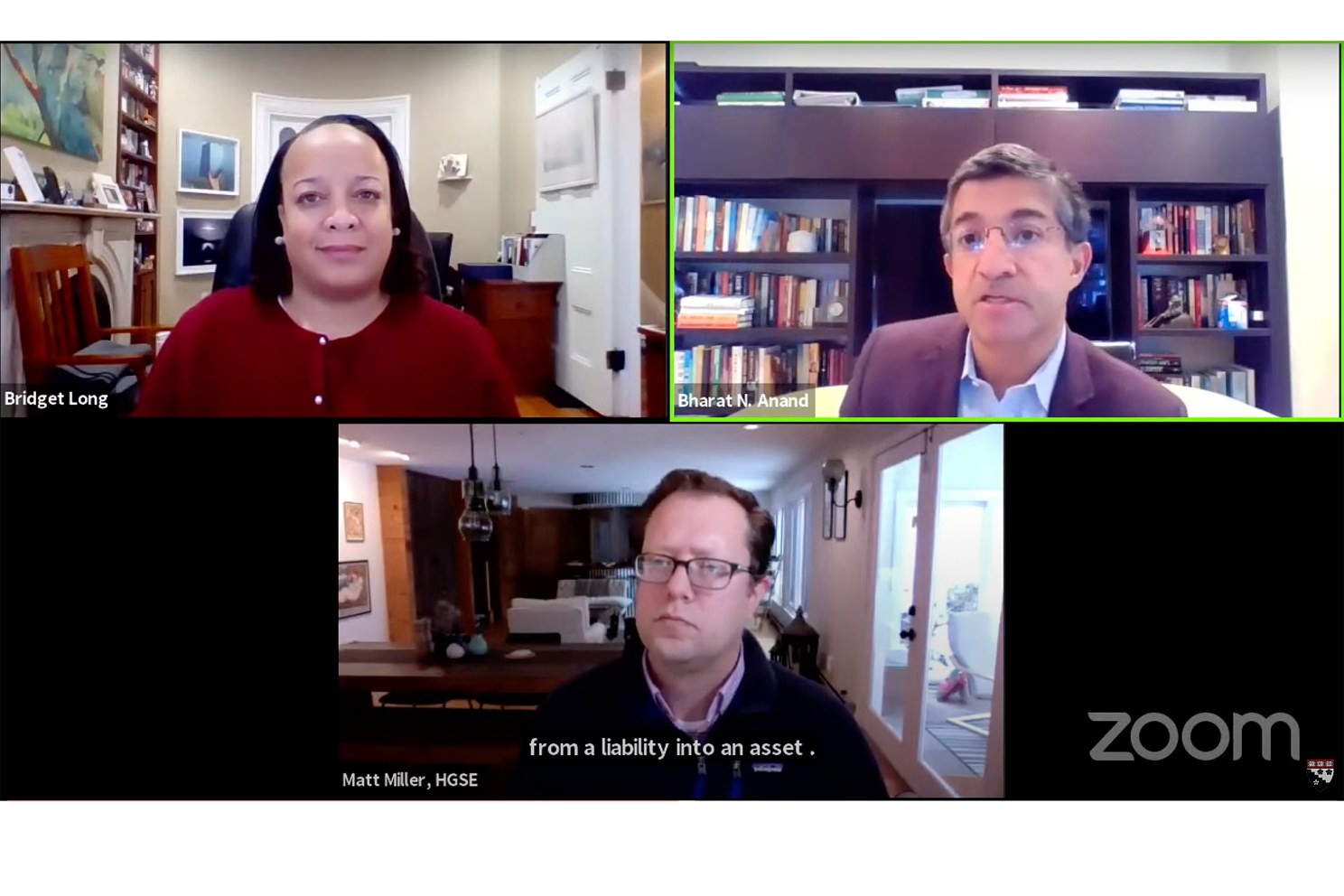Will the pandemic change higher education for good?

Bridget Long, Matthew Miller, and Mark Elliott in conversation.
The challenges that the field of education has faced this year have been well-documented, from the swift and surprising shift to online learning in spring 2020 to the transition into a more robust and sustainable model of remote teaching and learning this fall and winter. In the realm of higher education, as in other areas, leaders were forced to think creatively to meet new challenges, solve problems, and innovate. Not every solution will alter the education landscape forever, but some of the changes — from evolving curriculum to increased access to the power of new digital tools — could have long-term potential to do just that.
In the most recent edition of Education Now, co-sponsored with Harvard Abroad and hosted by the Office of the Vice Provost for International Affairs, Dean Bridget Long and Harvard’s Vice Provost for Advances in Learning Bharat Anand discussed the new and still-emerging advantages of remote learning, which of the innovations in higher education are worth keeping, which can be applied more widely, and how can they be leveraged to help shape the future of higher ed around the world.
The conversation also recounted Harvard’s own dramatic shift — at an unparalleled pace — to embrace online pedagogy, and the challenges it encountered. The event was moderated by HGSE’s Senior Associate Dean for Learning and Teaching Matthew L. Miller and hosted by Harvard Vice Provost Mark Elliott.
A selection of takeaways from the conversation include:
- Use remote learning technology to create a global community. Building a community does not require a physical campus. Focus on fostering engagement online through small sessions, deliberate in-class connectors, and breakout rooms. Invite alumni and special guests to virtual classrooms and events.
- Use technology wisely. There are many benefits to continuing remote instruction, such as integrating asynchronous learning experiences, increasing student engagement through breakout sessions, and reaching more students around the world. But be thoughtful about how you integrate technology into classrooms. Collect data on what is valuable and what isn’t. Involve faculty in the discussions and help them adapt their teaching to the technology.
- Make students’ home communities part of the learning. With students pursuing their studies from within their own communities, there is tremendous opportunity for expanded learning: engage in experiential learning, visit alumni working in the field, or apply their learning to their own workplace in real time
- Expand reach. With an increase in remote learning, there is also increased access. Students who could not uproot their lives in order to attend school, or who could not afford to leave jobs or families or cover the cost of relocating, can now pursue more options in higher education from their homes. And pursuing education does not have to be a one-time thing; broader access can inspire lifelong learning.




